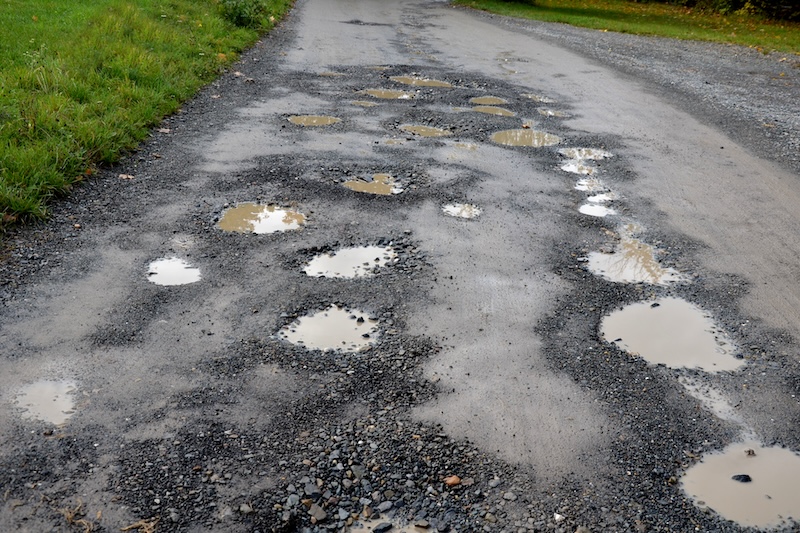10 Most Common Reasons For MOT Failure: And How To Avoid Them

Simple maintenance checks could save you time and money
MOT tests can feel daunting for many car owners, especially with the statistic that 28% of cars fail their MOT on the first attempt. However, understanding the most common reasons for MOT failures and how to address them can help you avoid costly repairs and save time.
In this guide, we’ll break down the most common reasons for MOT failure, provide actionable tips to prevent them and share insights from industry experts to ensure your car is in top condition before the test.
The Top MOT Fail Reasons (and How to Avoid Them)
1. Lights and Signaling Issues
The most common MOT failures come from blown bulbs and faulty signalling. These issues are often easy and inexpensive to fix but can be overlooked.
How to check:
- Turn on all lights (headlights, brake lights, fog lights, and indicators) and walk around the car to ensure they are functioning.
- Inspect light lenses for cracks or fogging that can reduce visibility.
- Don’t forget the number plate light—this is a common oversight that leads to failures.
Expert tip: Use a light-cleaning kit to polish cloudy lenses and ensure maximum brightness.
2. Suspension Problems
Another major reason for MOT failure is suspension issues, often caused by wear and tear or driving on pothole-ridden roads.
Signs of Suspension Problems:
- Unusual clunking noises during driving, especially over bumps.
- The car leans to one side or appears uneven when parked.
- Excessive bouncing when you push down on the car’s corners.
How to Prevent:
- Schedule regular servicing to catch early signs of suspension wear.
- Avoid driving over potholes and uneven surfaces whenever possible.
3. Brake Issues
The third most common reason for MOT failures are brake issues. Brakes are a critical safety component, and their failure during an MOT is often due to worn brake pads, damaged discs, or low brake fluid levels.
What to Check Before the Test:
- Listen for squealing or grinding noises when braking—these indicate worn pads.
- Inspect brake pads and discs (your mechanic can assist if you’re unsure).
- Ensure the handbrake holds the car securely on an incline.
Expert tip: Brake pads should be replaced if they’re thinner than 1.5mm to avoid further damage to the discs and callipers.
4. Tyre Condition and Tread Depth
Tyres are your car’s only contact with the road, making their condition crucial for safety. Many vehicles fail their MOT due to insufficient tread depth or damage.
DIY Tyre Checks:
- Use a 20p coin to check the tread depth. If the coin’s outer band is visible, the tread is below the legal minimum of 1.6mm.
- Look for uneven wear, bulges, or cuts on the tyre surface.
- Check that tyre pressure matches the manufacturer’s recommendations.
Expert tip: Rotate your tyres regularly to ensure even wear and extend their lifespan.
5. Driver’s View of the Road
Visibility issues, such as a cracked windscreen or faulty wipers, are another common reason for MOT failures.
What to Look Out For:
- Check for cracks or chips in the windscreen, especially within the driver’s line of sight.
- Ensure wipers clear the windscreen effectively without streaking.
- Top up the washer fluid and verify the washer jets are functional.
6. Exhaust and Emissions Failures
Emissions testing is becoming stricter, particularly for diesel vehicles. A faulty catalytic converter, exhaust leaks, or high emissions levels can cause your car to fail.
Preparation Tips:
- Use a fuel treatment to clean the system before your MOT.
- Take your car for a long drive at higher revs before the test to clear carbon deposits.
- Check for visible smoke or unusual noises from the exhaust.
Other things a car can fail an MOT on
- Seatbelts and Airbags: Ensure seatbelts retract and fasten correctly. Airbag warning lights must not be illuminated.
- Registration Plates: Plates must be clean, legible, and properly lit.
- Body and Structure: Rust or sharp edges on the bodywork can result in a failure.
- Steering Fluid Levels: Power steering fluid should be topped up to the required level.
How to Prepare Your Car for an MOT
Conduct a Pre-MOT Checklist:
- Lights: Ensure all bulbs are functioning.
- Tyres: Check tread depth and pressure.
- Brakes: Inspect pads, discs, and fluid levels.
- Visibility: Clean windows and mirrors; test wipers and washers.
Book a Pre-MOT Service:
Many garages offer pre-MOT services to identify and fix potential issues. This can save time and money by addressing problems before the official test.
Keep Maintenance Up to Date:
Regular servicing can catch issues early and prevent unexpected MOT failures.
Why Addressing These Issues Matters
Failing an MOT isn’t just inconvenient—it can be costly and impact your vehicle’s safety. By taking proactive steps, you can not only pass your test the first time but also ensure your car remains in top condition year-round.
For more tips on maintaining your vehicle, check out our DIY guide to car maintenance or book a service with your trusted mechanic.
Preparing for an MOT doesn’t have to be stressful. With this guide, you’re equipped to handle the most common issues and keep your car roadworthy. If you want to know how to fix your car yourself, check out our DIY guide to checking your car.
Frequently asked questions
What are the categories of MOT failure?
Example copy: The categories for MOT failure include:
- Dangerous: The car is unsafe to drive. This will result in immediate MOT failure.
- Major: Significant issues that affect safety or emissions. This will result in immediate MOT failure.
- Minor: Issues that don’t affect safety but need attention. This will result in immediate MOT failure.
- Advisory: This will not result in a MOT failure, but should be repaired as soon as possible.
Can you drive a car if it fails MOT?
Example copy: Not, you cannot drive a car if it fails MOT unless you are driving it to a garage for repairs or a pre-arranged MOT appointment.
Can you fail MOT for a dirty car?
Example copy: No, a dirty car isn’t a direct way to fix your MOT. However if your vehicle is disorganised to the point that the tester can’t carry out an MOT, this can result in a fail.
Check out our car insurance policies today!


